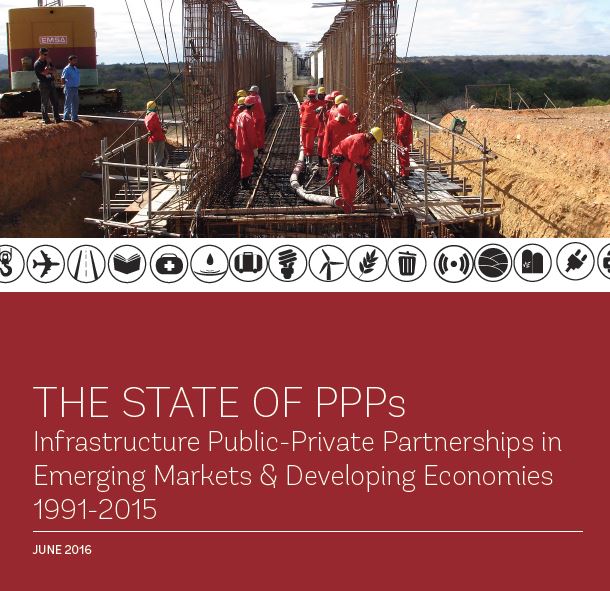610 results found
Featured results



More results
The Joint MDB Statement for Crowding-in Private Finance builds on the previously approved Principles for MDBs’ Strategy Crowding-in Private Sector Finance for Growth and Sustainable Development, and the 2016 Joint Declaration of Aspirations on Actions to Support Infrastructure Investment.


This report seeks to identify key capital markets instruments that can help mobilize institutional investors to infrastructure and small and medium enterprises (SME) financing in emerging market economies (EMEs).


The study identifies opportunities for investment to improve sustainable urban transport and mobility in five African cities




The guidelines and procedure for the formulation of the Three-year Rolling Infrastructure Program are prepared to guide all the implementing agencies in the development and updating of the TRIP.


This policy outlook paper series is part of the Leadership Partner Program with the National Australia Bank.





Japan's Program for Earthquake-Resistant School Buildings has increased the seismic safety of Japanese schools, and hence increased the safety of Japanese schoolchildren, teachers, and communities. Since 2003, when the program accelerated, the share of earthquake-resistant public elementary and junior high schools has increased, from under half of schools in 2002 to over 95 percent in April 2015. Japan is sharing knowledge from this program with developing countries through its relationship with the Global Facility for Disaster Reduction and Recovery (GFDRR), whose Global Program for Safer Schools has been supported by the Japan–World Bank Program for Mainstreaming Disaster Risk Management in Developing Countries and its implementing arm, the Disaster Risk Management Hub, Tokyo.
This paper—through a comparative analysis of data from Wuhan and Amsterdam—explores the reasons why the two countries have gone in different directions

The purpose of the present publication, Towards better infrastructure products: a survey of investor s perceptions and expectations of infrastructure investment , is to conduct the first in-depth study of the perceived role by infrastructure assets for investors.

The Logistics Performance Index has provided valuable information for policy makers, traders, and other stakeholders, including researchers and academics, on the role of logistics for growth and the policies needed to support logistics in areas such as infrastructure planning, service provision, and crossborder trade and transport facilitation.

The objective of this study is to assess the impact of the East-West Highway improvement program on Georgia’s ability to access international markets.

The PFRAM, developed by the IMF and the World Bank, is an analytical tool to assess the potential fiscal costs and risks arising from PPP projects.

These guidelines institutionalise the consultation and engagement of the public, with the goal of improving transparency in the development and implementation of PPP projects and overall infrastructure development.

The study has found that the main impacts of hydropower development in Bhutan relate to aquatic biodiversity and are cumulative,meaning that they are not of immediate concernbut should get priority attention once the development of hydropower accelerates. This study has identified a number of gaps inthe management of E&S impacts and rankedthem according to relevance for Bhutan.

This paper provides a condensed yet substantive overview of the key international lessons learned in the area of PBMC.


This report uses data from the PPI Database to analyze broad trends of PPP investment in infrastructure from 1991 to 2015.



The objective of the Diagnostic is to provide strategic, customized advice to client countries so they can make informed decisions in determining an operational plan for their PPP program, the choice of public investment vis-à-vis PPP, and type of PPP.


The report discusses forms of intervention and trade-offs, enabling factors, and evidence from case studies and stakeholder consultations in the areas of water, agriculture and energy. The report includes recommendations for a possible roadmap and funding options.

This report shows how competition policy can help African countries boost inclusive and sustainable development, the report outlines how competition policy can boost key sectors competition standards and legal/policy frameworks.




